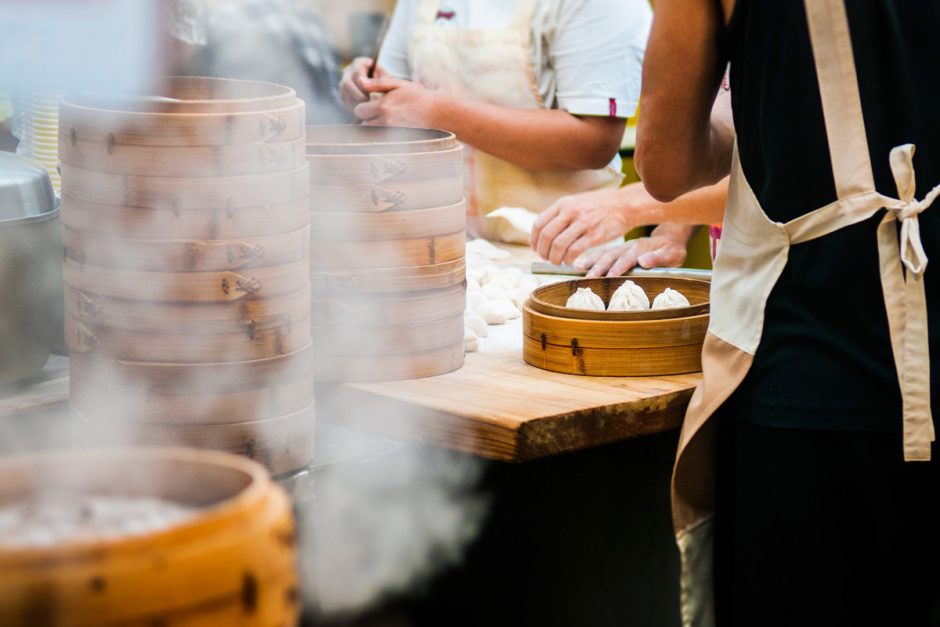Perk Up with 6 Tasteful Malaysian Drinks
Lighten your mood and rejuvenate your senses with 6 must-try Malaysian drinks!
Discover the authentic in Asian cuisine food

Steaming food is a very, very old method of cooking; the Chinese alone have been doing it since ancient times. But despite it being used by humans for generations, only recently have we truly begun to understand the health benefits it provides. Perhaps it’s because we’ve become more health conscious, or maybe it’s the continued developments made in food science. Whatever the reason, it’s clear now that steaming is an incredibly healthy method of cooking.
There are the obvious advantages we can all recognise—no cooking with oils or animal fats, less mess, a silky texture—but it’s what happens to the food on a micro level that makes it truly unique, especially when vegetables are involved.
Most cooking methods—such as baking, boiling and microwaving—break down vegetable tissue, which leads to antioxidants being destroyed. Some studies suggest that antioxidants could help fend off cancer, cardiovascular disease, diabetes, osteoporosis and neurodegenerative diseases. Boiling can be even more damaging, with some disease-fighting compounds dissolving in the hot water.
Though all vegetables vary in how they react to each cooking method, a number of studies have discovered that steaming not only preserves many precious nutrients, in some cases, it can increase them.
Researchers in Brazil analysed 21 studies that looked at how different cooking methods affected levels of antioxidants in vegetables. They found that Polyphenols—a type of antioxidant—could be reduced by up to 38% when food is boiled. Steaming increased polyphenol content by 52%.
Zheizhing University conducted tests[1] on the nutritional value of broccoli after it had been subjected to a variety of cooking methods, and steaming again came out on top. Even when checking the levels of carotenoids, another potentially cancer-fighting enzyme, steaming couldn’t be beaten.
Another study[2], this one performed by the US Department of Agriculture, showed steaming only reduced food-based folic acid and Vitamin C by 15%, while maintaining at least 42% of glucosinolates when compared to other methods of cooking.
[1] Effects of different cooking methods on health-promoting compounds of broccoli*
https://www.ncbi.nlm.nih.gov/pmc/articles/PMC2722699/
[2] USDA Table of Nutrient Retention Factors – https://www.ars.usda.gov/ARSUserFiles/80400525/Data/retn/retn06.pdf
So why is steaming superior to other methods of cooking?
Elizabeth H. Jeffrey, Ph.D., a professor of nutritional sciences at University of Illinois at Urbana-Champaign, says steaming maintains such high nutrient levels thanks to a gentler heating process and because vegetables aren’t submerged in water or oil. “The gentle heat actually releases some polyphenols from bonds that would have prevented your body from being able to digest them if you had eaten the vegetables raw”, adds Jeffrey.
Steaming has always been a delicious way to prepare food, but now there’s indisputable proof it’s better for you. Really smart people from a variety of countries have proven it! So, next time you’re starting a detox, diet or health kick, or simply want to eat some great tasting food, grab your bamboo steamer and just add water!
Here are a few things to remember next time you’re steaming food to ensure you get the best possible result.

Lighten your mood and rejuvenate your senses with 6 must-try Malaysian drinks!

Pair your hearty barbecues with these refreshing Asian delights!

What are the properties of ginger, and how to pick, store and use ginger in your cooking? Find out here!